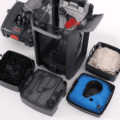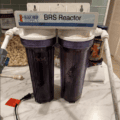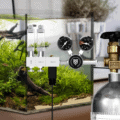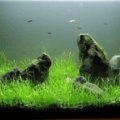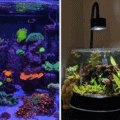If you’re thinking about getting a fish tank, one of the first questions you might have is, “How much should I pay?” The cost of a fish tank can vary depending on several factors, including the size of the tank, the material it’s made of, the brand reputation and quality, and any additional features and accessories. In this article, we’ll delve into these factors to help you determine the price range you can expect for a fish tank.

Setting Up a Freshwater Aquarium: Choosing the Right Equipment and Fish
Setting up a freshwater aquarium is a rewarding experience that requires thoughtful planning. Choosing the right equipment is essential for maintaining a healthy environment for your fish. Quality equipment, such as a sump filter, helps ensure the water remains clean and oxygenated, which is vital for species like dwarf cichlids and bottom dwellers.
While the initial cost may vary based on the size of the tank, larger aquariums offer more space for your fish to thrive. Custom aquarium and standard gallon tanks each have their benefits, but the key is to find a balance between quality and affordability for a long-lasting setup.
For more information on What You Need to For a Freshwater Fish Tank check out this comprehensive checklist:
Factors to Consider when Determining the Price of a Fish Tank
Size of the Fish Tank: The size of the fish tank is a significant factor in determining its price. A 30-gallon fish tank is the most popular size, as it offers a good balance between affordability and space requirements. Smaller tanks, such as 10-gallon ones, are usually cheaper, while larger tanks can be more expensive.
Be sure to check out our A Cheat Sheet to Fish Tank Gallon Sizes and Dimensions article for more on picking the right sized aquarium.
Material and Durability of the Fish Tank: Fish tanks are typically made of glass or acrylic. Glass tanks are more affordable and scratch-resistant, but they tend to be heavier. Acrylic tanks are lighter and give a clearer view, but they can be more expensive. Consider your budget and preferences when choosing the material for your fish tank.
Brand Reputation and Quality: The reputation and quality of the brand can also influence the price of a fish tank. Established brands with a history of producing durable and high-quality tanks may have higher price points. However, investing in a reputable brand can ensure the longevity and reliability of your fish tank.
Additional Features and Accessories: Fish tanks may come with additional features such as built-in filters, lights, or temperature control systems. These added features can contribute to the overall cost of the tank. It’s important to consider whether these features are necessary for your setup or if you can opt for more affordable alternatives.
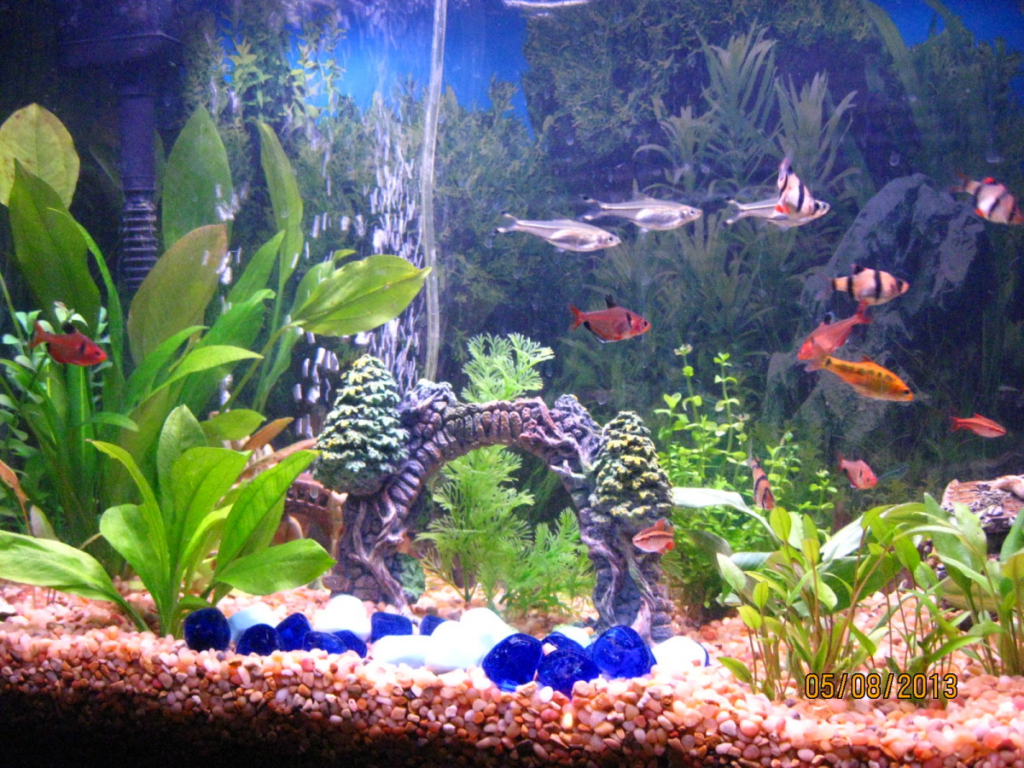
Understanding the Average Price Range for Fish Tanks
Entry-level Fish Tank Prices: Entry-level fish tanks are generally affordable and range between $50 and $100. These tanks are often smaller in size, around 10-20 gallons, and may not include many additional features. They are a good option for beginners or those on a tight budget.
Mid-range Fish Tank Prices: If you’re looking for a slightly larger tank with more features, mid-range fish tanks can range between $100 and $300. These tanks typically range from 30-50 gallons and may include basic filtration and lighting systems.
High-end Fish Tank Prices: High-end fish tanks, often larger than 50 gallons and with advanced features, can start at $300 and go up to several thousand dollars. These tanks are designed for enthusiasts and serious hobbyists who are willing to invest in top-of-the-line equipment.

Where to Buy Fish Tanks at Affordable Prices
Local Fish Stores: Local fish stores often carry a variety of fish tanks at different price points. Visiting these stores allows you to see the tanks in person and get advice from knowledgeable staff members. Keep an eye out for sales or clearance events to find great deals.
Online Retailers: Online retailers such as Amazon, Petco, and Chewy offer a wide selection of fish tanks at competitive prices. You can compare prices, read customer reviews, and have the tank delivered directly to your doorstep. However, be sure to check the shipping costs and return policies before making a purchase.
Second-hand Options: If you’re on a tight budget, consider purchasing a used fish tank. You can find second-hand tanks through online classifieds, local used goods websites, or fishkeeping forums. Just be sure to inspect the tank for any damage or leaks before making the purchase.
Tips to Save Money on Fish Tank Purchases
Comparing Prices from Different Sellers: Take the time to compare prices from different sellers to find the best deal. Don’t forget to consider the shipping or pickup costs when comparing prices.
Choosing Cost-effective Fish Tank Brands: Look for reputable brands that offer quality tanks at a lower price point. Customer reviews and recommendations can help you identify brands that strike a good balance between quality and affordability.
Utilizing Coupons and Sales: Sign up for newsletters or follow retailers on social media to stay informed about coupons and sales. These promotions can provide significant savings on your fish tank purchase.
Consider Buying Bundled Fish Tank Packages: Some sellers offer bundled packages that include essential accessories such as filters, lights, and decorations. These packages can often be more cost-effective than purchasing each item separately.

Additional Expenses Associated with Fish Tanks
Fish Tank Stand or Cabinet: Depending on the size and weight of your tank, you may need to purchase a stand or cabinet to provide proper support. These can range from $50 to a few hundred dollars.
Filtration System: A reliable filtration system is crucial for maintaining a healthy aquatic environment. Prices for filters can vary depending on the tank size and brand, ranging from $20 to $100 or more.
Lighting Equipment: Adequate lighting is essential for the growth and health of your fish and plants. Basic lighting options can start at around $20, while more advanced systems can cost several hundred dollars.
Water Conditioners and Treatments: To keep the water in your tank clean and safe for your fish, you’ll need to invest in water conditioners and treatments. These can cost around $10 to $20 per bottle.
Fish and Aquarium Decorations: Finally, don’t forget to budget for the cost of fish and decorative elements such as plants, rocks, and ornaments. Prices will depend on the species of fish you choose and the aesthetic you’re aiming for.
Comparing Freshwater and Reef Tanks: Understanding Costs and Maintenance
Choosing between a freshwater and reef tank can be challenging, especially when considering the costs and maintenance involved. Freshwater tanks are often more budget-friendly, with a lower initial cost compared to reef tanks, which require more specialized equipment.
The cost per gallon can vary significantly, especially for larger aquariums. Reef tanks, while stunning, demand more attention to water parameters and quality equipment, making them more suitable for experienced aquarists.
On the other hand, freshwater aquariums are easier to maintain, offering a diverse range of fish, such as dwarf cichlids and bottom dwellers, making them an excellent choice for both beginners and seasoned fish keepers.

Conclusion
In conclusion, the price you should pay for a fish tank depends on various factors, including size, material, brand, and additional features. Understanding the average price range and exploring different purchasing options can help you find a fish tank that fits your budget. Remember to consider the additional expenses associated with fish tanks, and ensure you have a plan for the ongoing maintenance and care of your tank. Happy fishkeeping!
FAQs
Q: How much does a 30-gallon fish tank cost?
A: The cost of a 30-gallon fish tank can range between $100 and $150, depending on factors such as brand, material, and included features.
Q: Are acrylic or glass fish tanks more expensive?
A: Acrylic fish tanks are generally more expensive than glass tanks due to their lighter weight and clearer view. However, glass tanks are more scratch-resistant and tend to be more affordable.
Q: Where can I find affordable freshwater fish tanks?
A: Local fish stores, online retailers, and second-hand options are all great places to find affordable fish tanks. Be sure to compare prices and consider the reputation and quality of the seller.
Q: How much should I budget for fish gallon tank accessories?
A: The cost of fish tank accessories such as filters, lights, and decorations can vary. It’s recommended to set aside around 20-30% of your fish tank budget for accessories.
Q: What ongoing costs should I expect for maintaining a fish tank?
A: Ongoing costs for maintaining a fish tank include fish food, water conditioners, and periodic replacement of filtration media. Additionally, budget for the electricity costs associated with running filters and lighting.



